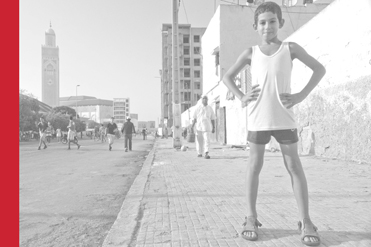Introduction
Executive Summary
- Details
- Introduction
Can the transition region ever catch up with the living standards of the world's most advanced market economies?
Economic growth remains well below pre-crisis levels and many countries have turned their backs on the reforms that could put economic expansion back on track.
The evidence suggests that countries can promote and accelerate the return of reform, particularly if international integration, domestic leadership and broader social movements work hand in hand.
Chapters 1 to 5 of the Transition Report 2013 look into the relationship between transition and democratisation, the scope for strengthening economic institutions, the state of human capital in the transition region, and the inclusiveness of economic systems.
The last two sections of this report examine the regional macroeconomic developments and outlook as well as recent trends in structural reform during 2013.
In addition, assessments of the economic performance of individual countries in the transition region are available online in Country Assessments.
Chapter 1: Convergence at risk
Economic reform has stagnated in the transition region since the mid-2000s, even in countries that are still far from reaching the transition frontier. Progress in transition has been closely correlated with political systems: countries which are more democratic have come further, in terms of reform, than their less democratic counterparts. However, public opinion turned against market reform after the 2008-09 financial crisis, especially in the more democratic countries. This is reflected in an increased number of "downgrades" in EBRD transition indicators since 2010, particularly in EU countries.
The results of a long-term forecasting model suggest that under current policies and institutions, productivity growth will likely remain modest over the next 10 years – around 2-4 per cent on average – and decline further in the following decade. At that rate, convergence with the living standards in western Europe would stall in some countries and slow to a crawl in many others. Only the countries of central Europe and the Baltic states would reach or exceed 60 per cent of the EU-15 average per capita income in the next 20 years. Most countries in the transition region would remain far below this threshold.
To revitalise growth, it is important to invigorate reforms and improve economic institutions. There is no shortage of advice in this regard, including in the Country Assessments that are available in the online version of this report. But reforms face political, social and human capital constraints. The purpose of this Transition Report is to investigate how countries can circumvent or loosen these constraints. The report analyses (i) the forces shaping political institutions; (ii) the scope for strengthening economic institutions within prevailing political systems; (iii) the relationship between human capital and growth; and (iv) the inclusiveness of institutions in the transition region.
Chapter 2: Political institutions
Since the onset of transition in 1989, many countries in the region have become consolidated democracies, while in others democratisation has stagnated or even gone into reverse. Why do some countries succeed in building sustainable democracies and others not? What role does economic development play in the process? Does transition to a market-based economy led by the private sector strengthen the medium and long-term prospects for democratic consolidation?
This chapter reviews the literature on economic development and democratic change. Although the academic community remains divided on this issue, there is strong empirical support for the proposition that economic development – measured in terms of GDP per capita – leads to advances in democracy over time, up to a point of diminishing returns. Furthermore, countries that cross a threshold of economic development are less likely to experience democratic reversals. The main exceptions are countries with large natural resource endowments, where state authorities can monopolise resource rents so as to avoid reliance on a system of broad taxation of the population – and therefore face less pressure to accept accountable representation. In addition, democratisation is less likely in the context of high inequality.
Empirical analysis confirms that most of these findings also hold for countries in the transition region. Those with higher levels of per capita income are more likely to democratise and less likely to experience reversals in the process. Large resource endowments are found to impede, or at least slow down, democratisation. There is also evidence that, among countries with similar levels of per capita income, early and more vigorous market reforms help to consolidate democracy. This is consistent with the view that economic liberalisation can prevent the formation of vested interests that benefit from weak political institutions.
In order to support countries in their long-term transition to democracy, it therefore makes sense to encourage policies and institutions that underpin economic growth, foster market reforms, and assist countries that are rich in natural resources as they seek to diversify their economic base.
Chapter 3: Economic institutions
How can countries in the transition region improve their economic institutions? Cross-country analysis shows that the quality of such institutions depends not only on the level of democracy, but on several other factors. Some are immutable or hard to change, such as history, natural resource endowments, ethnic divisions and eligibility for EU accession. Others such as openness and the design of democratic institutions are easier to alter. The analysis finds that countries with greater openness to trade and finance tend to have better economic institutions. Furthermore, political systems with proportional representation seem to have worked better in the transition region than majoritarian electoral systems.
A comparative study examining the success or failure of reforms at “critical junctures” –political shifts that opened a window of opportunity – in Georgia, Romania, the Slovak Republic and Ukraine confirms the relevance of the factors mentioned above. It also suggests that early transition histories were important because they sometimes gave rise to vested interests that became entrenched. Political polarisation makes the success of reforms less predictable and reformers and civil servants more hesitant. External anchors and international backing can have strong supportive effects, particularly when sought by the reformers. In addition, the background and conviction of leaders play a critical role in determining the success of reforms.
The chapter concludes with a survey of the options available to reformers who have to operate within the broad constraints of the prevailing political system. What can they do to help improve economic institutions? First, they can promote both economic and intellectual integration with advanced economies – through trade, finance and education. Second, they can seek to benchmark themselves internationally and become members of organisations with high institutional standards. Third, in some settings, they may also be able to pursue constitutional or electoral reform – for example, introducing proportional representation, which although not a panacea, can improve decision-making, particularly in societies that are less polarised or where vested interests are weak. Lastly, they can improve the transparency of political institutions at the regional and local level, as they play a key role in the shaping and reform of the business environment.
Chapter 4. Human capital
Education is critical for building a human capital stock conducive to economic growth and development. Primary and secondary education in most of the transition region compares favourably with that in developing countries in terms of quantity and quality and matches what many advanced economies can offer. At the tertiary level, however, transition economies perform much worse, and the gap with advanced economies has increased over the last decade. Southern and eastern Mediterranean (SEMED) countries are embarking on their own transition with lower stocks of human capital and are lagging significantly behind, particularly in terms of the quality of primary education.
The financial returns from tertiary education (“returns to education”) are critical to the successful development of a high quality human capital stock. Unless the returns are sufficiently high, individuals will be unlikely to pursue education beyond secondary level. The chapter shows that the returns to tertiary education depend not only on the supply of tertiary-educated workers and the quality of tertiary education, but also on the quality of a country’s economic, legal and political institutions. Institutions affect the link between human capital and growth, because they influence how human capital is used and the flow of migration.
A country’s ability to retain and attract skilled people is another important factor for building a high quality human capital stock. Countries in the transition region and SEMED have experienced emigration of their skilled workers, but have also received skilled immigrants in turn. However, only a few have managed to attract sufficient incomers to replace those who leave. By 2000, in most of these countries net emigration stock rates had increased compared to 1990. Due to the global economic crisis and to the accession to the European Union of 11 countries in the transition region, this trend is likely to have continued.
A high quality institutional environment makes it easier to attract and retain skilled people, who will innovate and adapt to global technological changes, and so stimulate economic growth. It also provides rewards to tertiary-educated individuals, thereby maintaining the incentives needed to invest in education. Human capital development and institutional improvements are thus complementary, and policy-makers should pursue them in parallel.
Chapter 5. Economic inclusion
Economic inclusion, defined as broad access to economic opportunity, is essential for well-functioning market economies. If people are denied the chance to succeed, they will lack incentives to seek education, participate in the workforce, invest or otherwise engage in activities that lead to growth and prosperity. Furthermore, market reforms that fail to benefit the population at large will not enjoy public support for long.
This chapter provides some direct evidence on economic inclusion in the transition region. Inclusion is not automatically apparent in measures of democracy or economic institutions, and so merits independent analysis.
Two approaches are used to characterise inclusion in the transition region. A bottom-up approach focuses on the individual or household level, measuring the extent to which differences in wealth or education across households are attributable to circumstances at birth. The stronger the relationship between circumstances and outcomes, the further a country lies from the ideal of equality of opportunity. A top-down approach rates the institutions, markets and education systems in regard to the capacity of countries to extend economic opportunity to individuals regardless of gender and place of birth, and to young adults regardless of social background.
This combined analysis finds large variations across geographic regions and the dimensions of inclusion. Inequality of opportunity is highest in the Western Balkans and some eastern European and Central Asian countries. In part, this reflects a failure to provide young people with relevant education and job opportunities. Place of birth – urban or rural – turns out to be an important driver of inequality of opportunity. Inclusion gaps also exist in regard to gender, particularly in the SEMED region. Except in Egypt, Morocco, Tajikistan, Turkey and Uzbekistan, education is not a major factor contributing to inequality of opportunity suffered by women, and in most countries gender does not seem to play a role in explaining differences in tertiary education. At the same time, the analysis suggests that education – and its quality and economic relevance in particular – is likely to influence inequality of opportunity that is based on people’s social or geographical origin.
Macroeconomic overview
The economic slow-down in the transition region, which began in the second half of 2011 as a result of the eurozone crisis, has continued in 2013. However, external drivers and regional distribution of growth have recently shifted. While the eurozone returned to modest growth in the second quarter of 2013, there has been a downturn not only in key emerging markets like China and India but also in the three largest economies of the transition region: Russia, Turkey and Poland.
As a result, countries initially less exposed to the eurozone crisis have suffered weaker trade and remittances and declining growth. In central Europe and the Balkan states, and in south-eastern Europe exports have recovered and deleveraging has moderated. Nevertheless, the slow-down in their economies has continued, driven by a fall in domestic consumption and investment. Regional growth is projected to accelerate modestly in 2014, in line with a slightly improved external environment.
Reform overview
Structural reforms in the transition region continue to face serious challenges. 2013 has once again seen a relatively high number of downgrades for sector and country-level indicators. At the sector level, reform reversals and increasing government interference in the energy sector are reinforcing the negative trends of recent years, in particular in central and south-eastern Europe. However, financial sector reforms enacted in the wake of the 2008-09 crisis have proven more resilient. There have also been other positive developments, with progress on public-private partnerships and the restructuring of utilities in infrastructure. The corporate sector continues to suffer following the crisis, but there are signs of recovery in certain countries.
At the country level, transition indicator downgrades outnumber upgrades for the first time. There have been three downgrades for Hungary and two downgrades for the Slovak Republic, mainly due to increased government involvement in the energy and insurance sectors which may negatively affect the confidence of domestic and foreign private investors.
 Tools
Tools
© European Bank for Reconstruction and Development 2013 | Disclaimer | Acknowledgments | Site Map | communications@ebrd.com


















